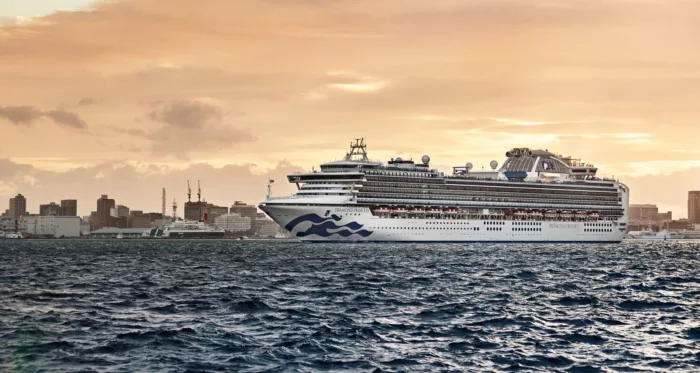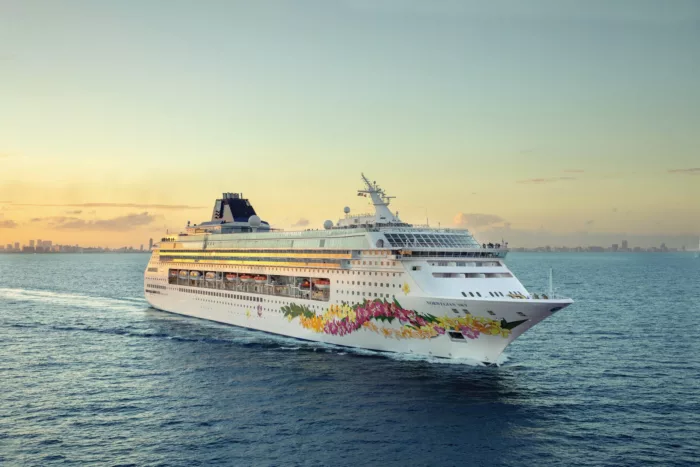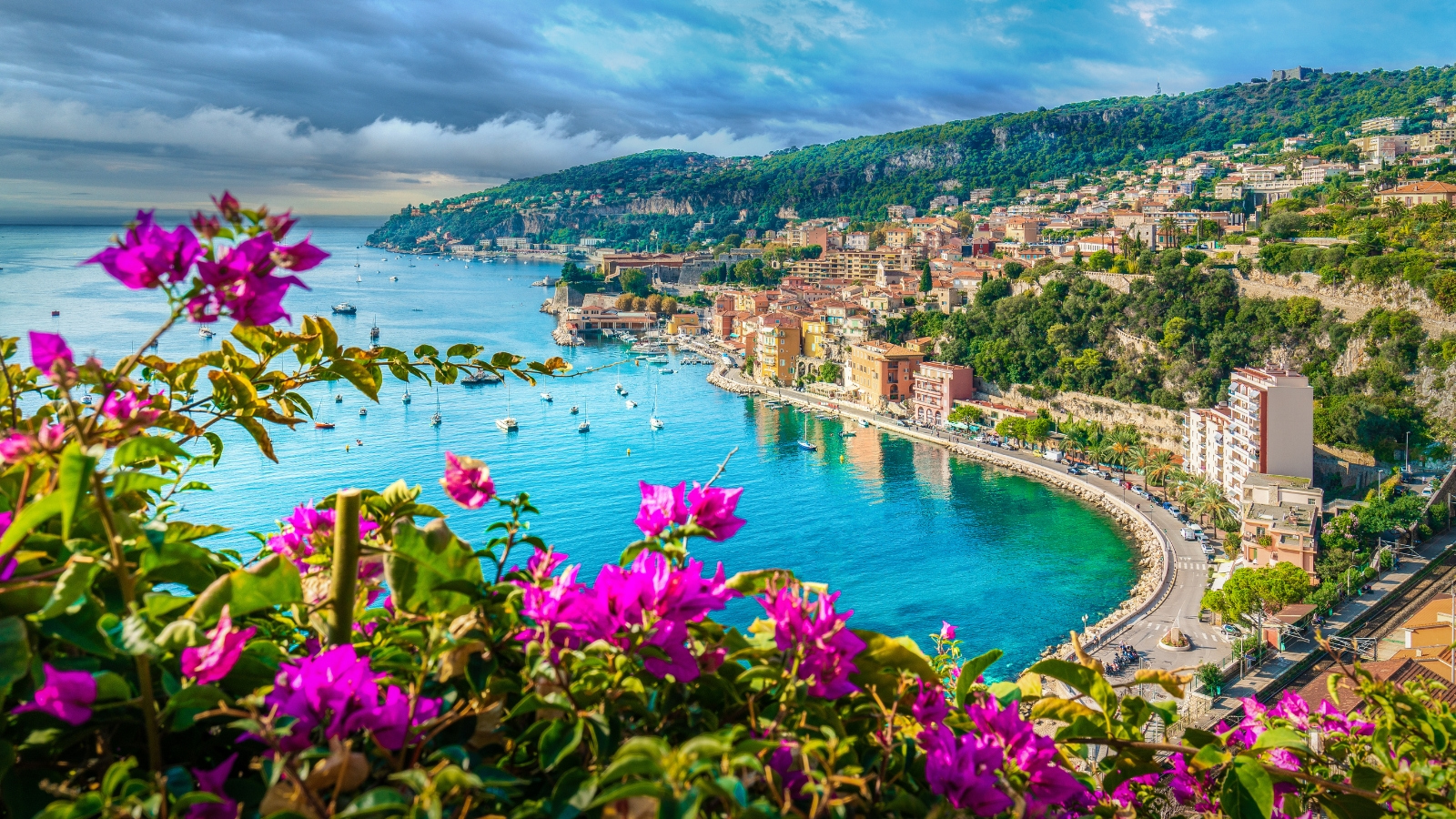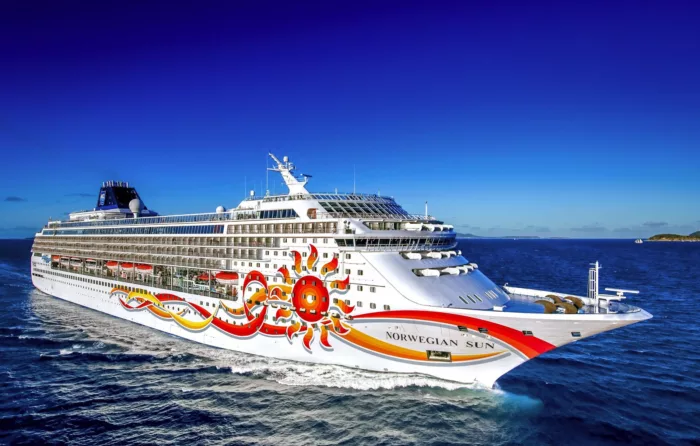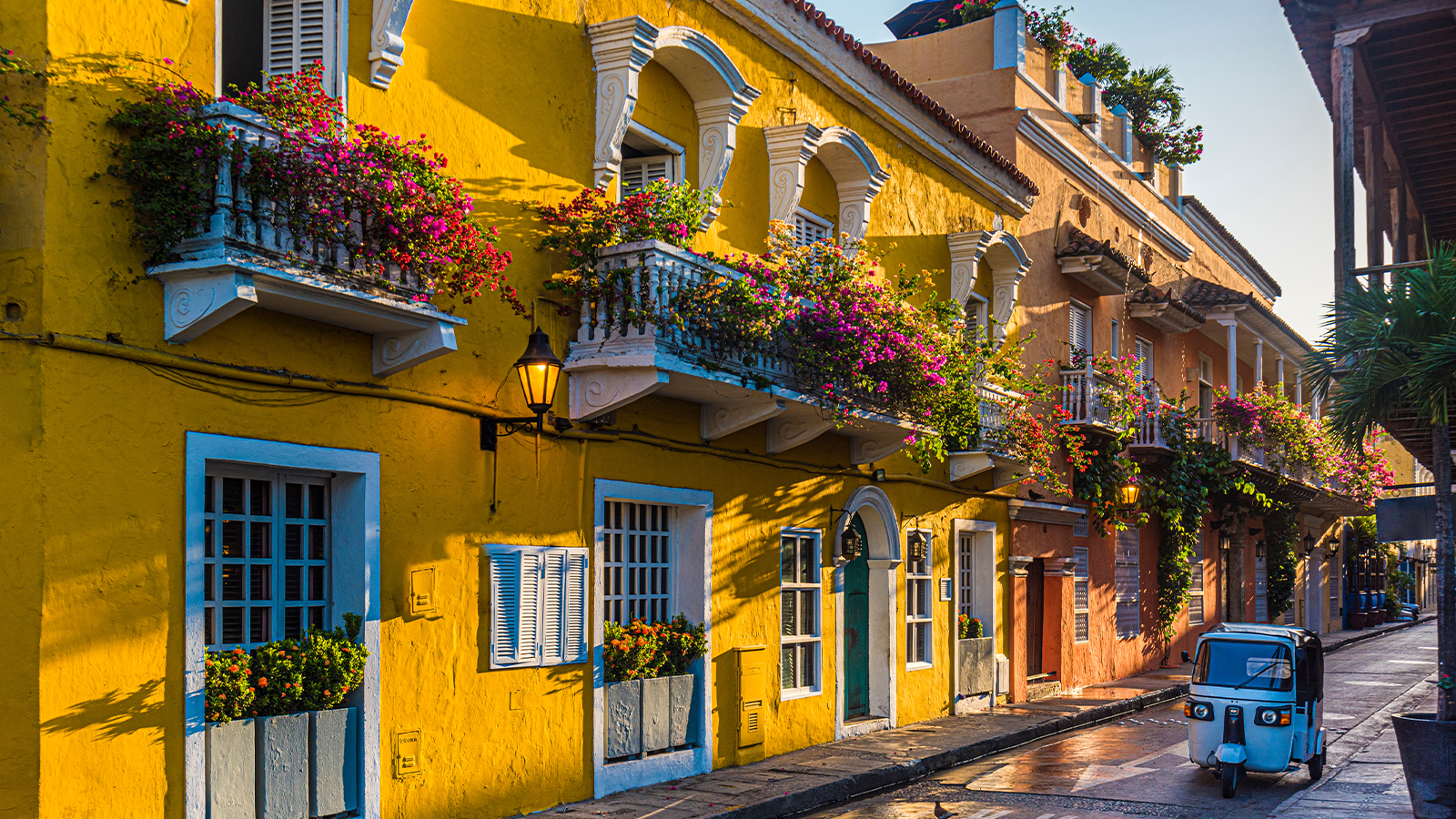
Cunard's finest hour: RMS Carmania's devastating encounter with the enemy
Launched as a luxurious Cunard ocean liner, RMS Carmania became embroiled in the war effort by 1914. Although small and under-equipped, when a German warship attempted to gain access to an allied port by masquerading as Carmania herself, the Cunarder proved to be hard-as-nails. What happened next was rather violent, but also rather incredible
Gently nudging her way past the quayside at Blyth, on the outskirts of Newcastle-upon-Tyne, as curious onlookers leaned over the railings to observe proceedings, it must have been an intriguing irony to see RMS Carmania go by so placidly.
As the ship’s wake within the mighty Tyne closed and slowly receded behind, the end of a glorious and steadfast career arrived. While always regretful to see any ship enter a breaker’s yard, in Carmania’s case, there lay the potential for the occasion to prove notably mournful.
However, among the many present that day, it was most likely instead business as usual. The shipbreaking yard of Hughes Bolckow & Co was always busy and RMS Carmania, while a vessel from the illustrious Cunard line, was not as renowned among the public as her much more famous stable mates.
In the north of England, particularly in the areas surrounding the city of Newcastle, the name RMS Mauretania can still spark plentiful admiration and eager chatter among the Geordies. Mauretania was and remains Newcastle’s maritime pride, a physical summation of all the city achieved during its industrious shipbuilding years.
It's quite well known that, should you mention Cunard’s Mauretania in Newcastle, you may struggle to break away from a corresponding and endless profusion of which even Derry Girl's Uncle Colm would be proud. On the other hand, RMS Carmania was a name that would slip by most.
Constructed in 1905 by John Brown & Company, Carmania was brought into service for Cunard on the Liverpool-New York route. Alongside her sister ship, the RMS Caronia, Carmania worked in direct competition with White Star and the International Mercantile Marine Company who, like many others, had very good reason to observe her.

An eclectic testbed
RMS Carmania combined Geordie innovation and Clyde-side inspiration. Although a modest-sized ship of some 19,524 gross tonnes, RMS Carmania possessed both the innovation of Newcastle and an inspired Glaswegian founding to thank for the surprising amount of interest she attracted.
From the off, Carmania was designated as a ‘special job’ to the extent that even the Admiralty wanted to know about her. Designed by Cunard’s Senior Naval architect Leonard Peskett, Carmania held a solid pedigree.
Shortly after, Peskett would go on to also pen the blueprints for RMS Mauretania, RMS Lusitania and RMS Aquitania – all of which would become household names and are still fondly remembered now.
Christened by Lady Blythswood – wife of a former aide to Queen Victoria – RMS Carmania carried comfortable communal spaces, pleasantly finished with fine fixtures. Both Carmania and Caronia were referred to as the ‘pretty sisters’ while they keenly plied their trade.
Although the two ships looked alike, underneath their respective superstructures was a drastic difference in the way by which each achieved propulsion. Caronia was a traditional triple-screw, quadruple-expansion ship while Carmania was something completely different. On Cunard’s behalf, Carmania was poised to be a pioneer.
Occupying Carmania’s engine bay was operating gear that was anything but conventional - a steam turbine engine that contained over a million blades. Inside, expanding steam was severely compressed to give out maximum energy.

The technology heralded from the innovative genius of Charles Parsons, which had presented itself during his tenure with Clarke, Chapman and Company of Newcastle. Although complex, this novel machinery weighed 5% less than that in Caronia.
A few years prior, everyone had really sat up and taken notice when a small ship named the Turbinia – fitted with the same intriguing technology – left British naval vessels far behind at the Spithead Navy Review of 1897.
Tearing along at a remarkable 34.5 knots, little Turbinia left all who viewed this spectacle completely astounded. Palatable curiosity oozed from those with stakes in maritime transportation or naval warfare. There was clear potential to be explored.
This led John Brown and Company of Clydebank to make an inspired suggestion to Cunard of testing this very engineering inside one of their new ships. After all, business was at a low ebb so what was there to lose? Cunard agreed.
Thus, it was decided that Caronia would stand as the traditional benchmark while Carmania would act as the testbed for the use of steam turbines in their fleet. If Carmania could go quicker while also being cheaper to run, she would pave the way for numerous vessels that would follow afterwards.
Geared to triple screw with a service speed of 18 knots, Carmania set out on her maiden voyage from Liverpool to New York. Ploughing through bad weather for the entire crossing, Carmania delivered thoroughly commendable service despite testing conditions. The Parsons’ steam engine was the new way forward.
Many eminent passengers enjoyed Carmania’s rapid passage including H.G. Wells, a renowned English novelist and author of The War of the Worlds.
With that, Cunard designated turbine engines to their upcoming four-stacker ocean liners - RMS Lusitania and RMS Mauretania – who would become known as the ‘greyhounds of the ocean’ thanks to their speed and streamlined elegance. Their engineering roots had been thoroughly tested and developed in the much lesser-known RMS Carmania.

Carmania takes command: Rescue of SS Volturno
In October 1913, Carmania received an SoS call from a ship 78 miles away that was caught in a deadly predicament. The SS Volturno of the Canadian Royal Line was on fire, with a highly combustible cargo in the hold while she was under charter to the Uranium Line.
Volturno’s distress message echoed out over 200 miles and a total of eleven vessels hastened to the flaming ship.
RMS Carmania was the first responder and, upon arrival, encountered a distressing scene. Volturno had already launched six of her lifeboats but, due to the appalling conditions, four of these had either capsized or been smashed against Volturno’s hull, killing all those who had so far sought relief.
Those still on board were desperate for assistance as flames raged through the ship’s coal bunkers. Other vessels began to assemble nearby. Commodore James Clayton Barr of Carmania took command of the rescue effort.
Commodore Barr instructed the other ships to form a ‘battle line’ and they slowly circled the ablaze Volturno. Carmania fixed a searchlight beam upon the burning ship while she used another to sweep some light around the ring of rescue vessels. This helped ensure no ship collided with another as the combined rescue attempt got underway.
Through co-ordinated and determined efforts, a total of 521 individuals were rescued from SS Volturno. On october 26, 1913, Carmania docked in Liverpool once again. Of those stepping ashore, forty-three were survivors from Volturno.
Carmania’s heroic role in this rescue resulted in many awards for gallantry being presented to her crew. From the Liverpool Shipwreck and Humane Society, Commodore Barr received the Gold Medal for his part in aiding Volturno. Carmania’s officers were awarded the Silver Marine Medal while her boat crews received the bronze equivalent.
Drastic conversion in Liverpool
Shortly after the rescue of SS Volturno, as the first World War broke out, the heroic efforts of Cunard’s Carmania didn’t get time to settle back into peacetime duties.
Requisitioned by the Royal Navy in 1914, Carmania was hastily converted in Liverpool. She was transformed into an armed merchant cruiser under pennant number M 55.
In just a week, the former ‘pretty’ ship was fitted with eight 4.7-inch guns and recommissioned HMS Carmania. Naval Captain Noel Grant took the helm. He was accompanied by reservist officers and crew, many of them Cunard men.
Initially, HMS Carmania was put on patrol upon the Halifax route before being stationed at Bermuda and then Trinidad. It was at the latter that Carmania would enter the history books with a most unexpected and brutal encounter.

The bravest Cunarder: Carmania’s finest hour
Carmania’s finest hour, or more specifically one hour and forty minutes, appeared to come out of nowhere. Indeed, the Cunard ship and her crew could almost have argued they were simply minding their own business on September 14, 1914. They were certainly not looking to participate in one of the most notable naval episodes of the First World War. Yet, fate has a funny way of finding you.
While Carmania was patrolling the waters surrounding Trindade Island - her principal duty being to flush out German colliers who might be lurking there to take action against British shipping – the crew spotted something unnervingly odd.
It was another ship, which looked distinctly familiar and yet was not identifiable.
Like Carmania, the nearby vessel sported dark grey paint – standard fare during wartime operations. And like Carmania, the unknown ship possessed two funnels. An assortment of visual clues suggested the vessel was of British origin but something just didn’t feel right.
Further observation was not helping so the two ships resorted to exchanging coded messages. What was revealed in the unexpected dialogue would soon unleash all holy hell.
HMS Carmania was corresponding with SMS Cap Trafalgar, a former Hamburg-Amerika liner named after the famous Battle of Trafalgar of 1805. She was regarded as one of the finest German liners of her time, her interiors having been lavishly decorated during peacetime with high-fashion furnishings and intricate gold filigree.
However, as the conversation continued, this renowned German liner was neither honest nor a friend. Cap Trafalgar had also been requisitioned by her native navy and deceit lay in her very structure. Where she had previously had three funnels, now she had two. She was flying under a false flag.
Disguised as a British Allie, Cap Trafalgar was functioning as a German auxiliary cruiser and she was not to be trusted. HMS Carmania had just stumbled upon a large load of trouble. While SMS Cap Trafalgar’s role was to lure in and attack British shipping, HMS Carmania sought to protect it. It very quickly became apparent that, single-handedly, Carmania would have to keep this blighter at bay.

Liners of this class were armed but with the principal aim of simply being able to defend themselves during wartime sailings. They were not instructed to go into battle. Although no-one had intended what happened next, the inevitable quickly unravelled.
The two ships eyed each other up. They were remarkably similar and yet neither could assess what the other carried in terms of weaponry. There was only one way to sort this – a polite pre-battle fanning of feathers.
Much like men taking their ten paces at dawn, Carmania and Cap Trafalgar moved away from each other and swung about. As they faced each other, tension sparked across the gap.
Perhaps prompted by German pride, Cap Trafalgar revealed her guns first. She had two, with a range of 7,000 yards. Delight spread through Carmania’s crew for they had eight. It was easy to begin thinking fortune may have smiled and, forgetting to curb her enthusiasm, Carmania was the first to open fire.
Disappointingly, the shot missed.
Cap Trafalgar’s better trained and former gunboat crew responded with a return fire but they too missed, likely thanks to misjudging the higher elevation of merchant ships. It was a polite start but it was not to be repeated.
Chaos descended as each vessel blatantly opened rapid fire upon one another. On both ships, crew members scurried up and down from their respective storerooms, hurriedly bringing up fresh supplies of ammunition from below decks. This all-or-nothing fight required a plentiful supply of deadly fodder.
As the more obvious ammunition ran low, grenades were also thrown. All cards were on the table. In a moment of ingenuity, Cap Trafalgar resorted to using her anti-aircraft guns with devastating effect. Most of her shots had aimed high.
Carmania’s rigging, masts, funnels, derricks, ventilators and bridge took a pummelling. Shrapnel and splinters flew across her corridors while sections of marble finish took on what looked like fresh craters on the moon. The formerly luxury interior was being abused like a disposable film set.

As the crew of Carmania sought shelter from the assault above, descending into the hull, a fire broke out within the bridge and spread to the cabins below. Control of Carmania would now have to come from the aft of the ship.
As Cap Trafalgar fought broadside, Captain Grant instructed Carmania’s crew to keep either the bow or stern pointed towards their German rival. This clever strategy helped minimise Carmania’s profile and, in turn, her capacity to be struck.
However, the on board fire continued to encroach. Reluctantly, the increasingly vulnerable Carmania veered away.
As she did so, her two rear guns aligned perfectly with Cap Trafalgar’s hull. Down but certainly not finished, the Carmania crew laid in some revenge. Cannons blazing as she came, Carmania’s 9,300 feet range guns aimed below her foe’s waterline.
In return, Cap Trafalgar tried to destroy Carmania’s guns as the German liner began to list notably. Carmania continued ravaging the waterline, each hit adding yet more cumulative damage.
To rid herself of this rabid onslaught, Cap Trafalgar turned for an optimal strike but the manoeuvre served only to rip the already savaged hull. Severe flooding took Cap Trafalgar to a list of 30 degrees, forcing Commander Julius Wirth to give the order to abandon ship.
Having achieved her objective, Carmania ceased firing before a slow approach to the stricken vessel to rescue survivors. However, thanks to her inaccessible bridge, she was difficult to control and, while still very much aflame, not ideally placed to act as a vessel of salvation.

Then, in addition to her own, further smoke was spotted out on the horizon. Concern spread among Carmania’s crew. Had Cap Trafalgar alerted those upon her side? Was another German ship coming in for the kill?
The crew struggled to keep Carmania afloat. How would they make a getaway? The last thing they needed was another enemy ship to deliver the final blow. All they could do was try to scarper as the German liner Kronprinz Wilheim advanced.
Kronprinz Wilheim could likely have taken out the injured Carmania with ease, but the Brits happened to be in luck. The German liner assumed Carmania was trying to lead it into a trap, especially as the British had RMS Olympic on their side (and she had gained a brutal reputation for shredding enemy craft without much effort), and so it turned and left.
Cap Trafalgar slipped beneath the waves. Her Captain had died in the battle along with many of the crew. As she descended, Cap Trafalgar became the first armed merchant cruiser to be sunk by a ship of the same class.
The collier Eleonore Woermann picked up German survivors. They spent the remainder of the war interned on the island of Martin Garcia by Argentina.
Meanwhile, Carmania had developed a list of her own. With a smouldering bridge and a staggering 304 holes hammered into her structure, she was worse for wear. Battered, aflame and yet still mobile, Carmania made for an unbelievable sight.
The brave Cunarder aimed south. Afloat by only a wing and a prayer, her crew prayed they would be able to rendezvous with a British cruiser as they maintained the fight to save her.

HMS Carmania: A mention in dispatches
After her phenomenal battle with Cap Trafalgar, rescue finally blessed Carmania after two further gruelling days at sea. Having lost nine of her men with twenty-six wounded aboard, Carmania required urgent assistance.
Finally, the ship met the British cruiser Bristol which acted as a much-needed escort. Another naval ship by the name of Cornwall then towed the grateful Carmania to Abrolhos Rocks to receive emergency repair.
Afterwards, the armed merchant cruiser Macedonia transferred Carmania to Gibraltar. Here, over approximately two months, the damaged warrior received more comprehensive repair in the dry dock. On November 23, 1914, a renewed Carmania departed to resume wartime service.
Elsewhere, Cunard’s Carmania and crew attracted a mention in dispatches and Distinguished Service medals followed. Carmania’s former captain Commander Barr, who had served as navigating officer while the Cunard ship was under the instruction of Noel Grant RN, was decorated by His Majesty the King with the order of the Companion of the Bath.
Carmania’s duties as an armed merchant continued for a further two years, alongside transporting American and Canadian troops back home while sporting a dazzling coat of naval camouflage.
New York, Canada and Boston: Return to commercial service
Decommissioned in May 1916, Carmania returned to service with Cunard. She worked the New York route again as of December 1918.
Soon after, the cruise line allocated her a major refit including conversion to burning oil and installation of new navigational equipment. Additionally, her lifeboats became double-banked with extra pairs installed by the main mast. A very serious attitude to lifeboats and positioning ran apparent following the RMS Titanic and RMS Lusitania disasters.
Briefly, Carmania was paired once more with her sister Caronia. They worked together between Liverpool and Canada. In 1925, the sisters returned to the New York service, now incorporating Boston as an extra port of call.

A northern conclusion: Loss of a legend
After 27 years of reliable service as well as her remarkable rise into battle upon meeting Cap Trafalgar, RMS Carmania could sadly not hold off the cruel aftereffects of a floundering economy.
By 1931, the Great Depression had truly started to bite and many a great ship would be scrapped. Even those with a valiant heart who had performed stellar war service were not spared. One pitiful loss was the mighty ‘Old Reliable’ RMS Olympic, who had used her knife-edge bow to take out the German submarine U-103 when she had found herself under attack during World War One.
As funds tightened everywhere, Cunard withdrew both RMS Carmania and her sister Caronia from service. Despite Carmania’s still impressive speed and her place in securing the uptake of steam turbine power among great ocean liners, the ship’s machinery had become uneconomical.
Consequently, the former poster star of turbine power was temporarily laid up at Sheerness before being sold for £20,000 to Hughes Bolckow and Company in Blyth, Northumberland.
In April 1932, Carmania moved past Blyth Harbour Lighthouse and up into the estuary leading towards Cambois. This was the final chance for people to see Cunard’s heroic steamer. Had they known her dramatic and complex history, perhaps many more regretful sighs would have been uttered from those nearby.
The moment could perhaps have been best surmised by one of the literary works of previous Carmania passenger H.G. Wells with the line ‘Slowly disappearing, farewell Thunder Child’.
